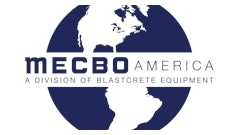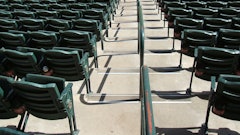If you were to take a building tour today, one item would certainly stand out?the diversity of architectural options owners have when constructing a facility.
Increasingly, owners are pressured to meet strict design requirements for a community that blend into the area's existing design theme. Owners seek a facility that is not only durable, energy--efficient and cost--effective to both construct and maintain, but it should also be architecturally appealing.
The site--cast tilt--up industry continues to respond to this changing dynamic by introducing a variety of architectural innovations and offering design professionals an expanding palette for displaying their creativity. Tilt--up construction professionals now have limitless possibilities for creating an aesthetically appealing structure that can celebrate concrete or mimic other materials including architectural features such as cornice lines and accent bands, facade enhancements like thin brick, block and stone, as well as a multitude of textured coatings. In fact, these decorative options--a far cry from the simple paint options afforded with yesterday's tilt-up-are proving to be one of the primary reasons for the construction method becoming not only a viable option for virtually any building type, but also a leading design medium for ingenuity.
Designing for success
Capitalizing on the freedom obtained from using the free--flowing concrete material, the architectural possibilities of employing the tilt--up method are endless. Designers, craftspeople and suppliers in the tilt--up industry have worked together to develop a wide range of new tilt--up finishes in addition to tried and true methods.
Integrating factory-produced brick and stone products is both easy and fast with tilt-up construction. A variety of proprietary cast-in thin brick and cast-in thin CMU block options are currently available in the marketplace. The thin brick replicates the look of hand-laid brick while adding safety and efficiency by installing the brick on the floor slab rather than from scaffolding. The thin brick is available in a wide range of textures, sizes and colors, similar to traditional brick. Similarly, thin block embeds architectural concrete masonry into the face of a tilt--up panel using only the contractor's existing workforce and methods. It also is available in a wide range of colors, finishes, shapes and patterns.
In addition to surface treatments, tilt--up offers owners an endless array of color and finish options. The color of exposed aggregate panels can be varied by selection of cements, colored admixtures, aggregate selection, and mixture proportions. Typical colors include white, grays and light browns, although custom colors are available. Color variations between panels are limited by close control of the concrete mix proportioning at the ready--mixed plant.
For your shopping pleasure
Familiar with the benefits of site cast tilt--up construction, the owner of the Falls Pointe Shopping Center in Raleigh, N.C., selected the method for its proven performance in creating a lifestyle mall with individual tenant facades and a variety of window types on a tight schedule. This project is an excellent example of the success that can be obtained when tilt--up is integrated with other materials. Hip roofs, steel canopies, metal awnings, brick tiles and EIFS trim elements were used throughout the project to provide visual interest. Colors alternated between tenants to enhance the individual facades. However, repeated elements such as white accents and green and blue awning/canopies, unifed the overall project.
"This project raised the bar for retail developments in the area and others have tried to mimic the design," says Glenn Doncaster, president of Citadel Contractors, the tilt--up contractor for the project. "Tilt--up enabled the owner to accomplish the goal of individual facades, which is not typically cost--effective with other building methods. The vibrant color used along with the canopies invite the eye to scan the retailers' storefronts and create a festive atmosphere."
Blending into nature
The desire to create a structure that would complement the colorful sandstone hills and red soil of southern Utah was a major factor in the Washington County School District's decision to use tilt-up for the construction of the 134,000--sq.--ft. Fossil Ridge Intermediate School in St. George, Utah.
Summer temperatures, which can reach 115 degrees F during the daytime, caused concern over the ability to maintain a consistent color and finish from panel to panel. To circumvent this issue, the contractor, Hughes Contractors of North Salt Lake, Utah, obtained special permits from the city allowing concrete pours to begin at 2 a.m. To ensure further consistency, the ready-mixed producer stockpiled enough cement powder from the same source for all panels and also kept the same aggregate source throughout the project. Entire wall elevations were poured, corner to corner, on the same day, and all panels were pumped to avoid the inconsistencies in finish that can occur when concrete is placed directly from the chute.
Because the school is located in the vicinity of the recent discovery of dinosaur tracks, two life--sized 30--ft.--long dinosaur skeletons were cast into the interior concrete panels in the commons area using a polycarbonate template. These templates gave a slick, almost glass--like finish, setting the impressions off both in color and texture from the standard reveals.
Expanding options
Although a host of architectural materials are currently available, innovative tilt--up professionals continue to create new design options for owners.
Jim Baty, TCA's technical director, says that he continues to be amazed at the evolution of modern tilt--up.
"Professional contractors are showing that there may not be a limit to what tilt-up can create or emulate as nearly every shape, texture and color has been successfully created using the tilt--up medium. The key to success is the discovery by architects of the numerous advantages of tilt--up," he says.
Ed Sauter is the executive director of the Tilt--Up Concrete Association. This is the second article in a year--long series on the benefits of tilt-up construction presented by the TCA and Concrete Concepts. For more information about TCA, visit www.tilt--up.org or call (319) 895-6911.

























